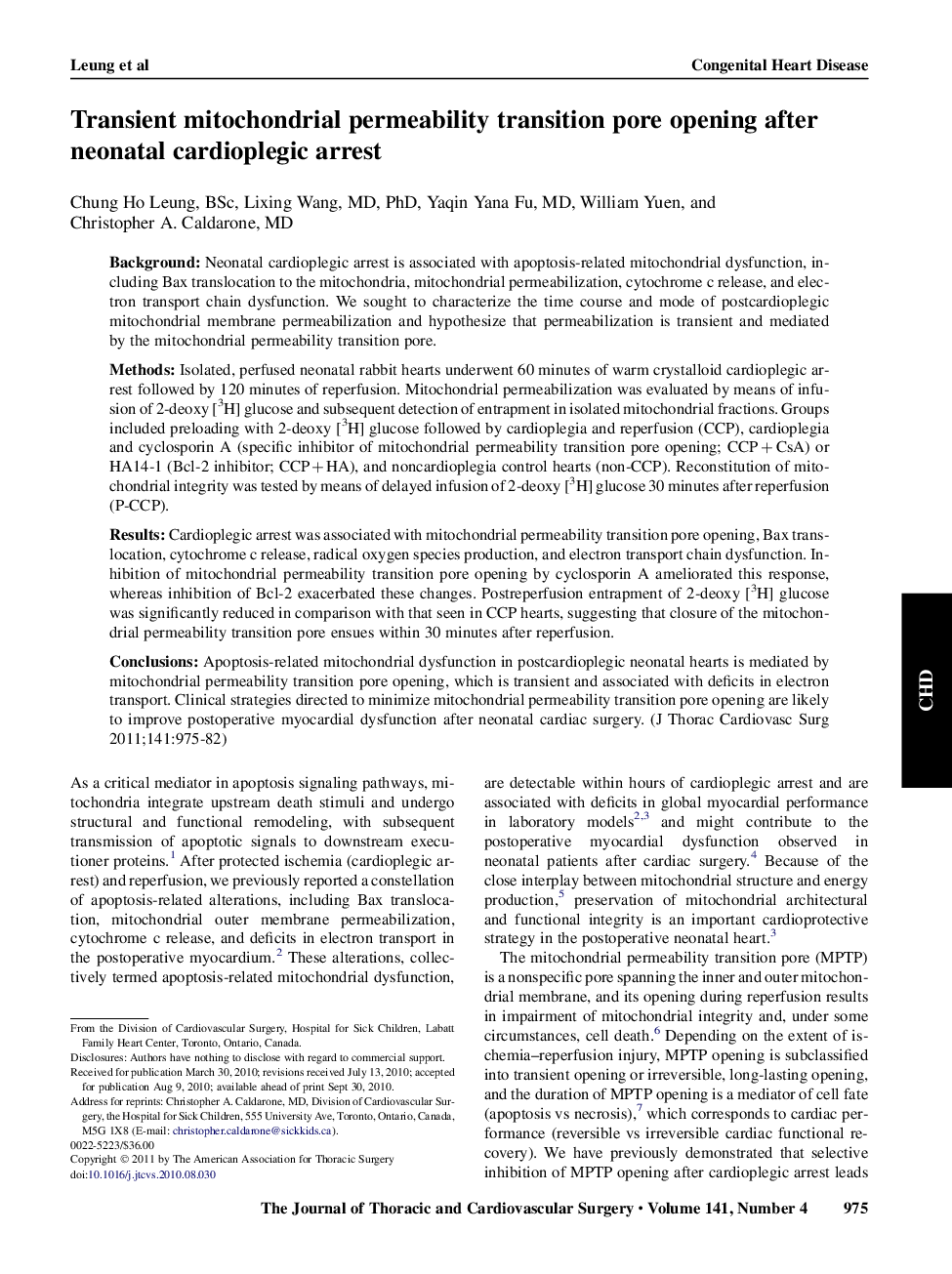| Article ID | Journal | Published Year | Pages | File Type |
|---|---|---|---|---|
| 2982664 | The Journal of Thoracic and Cardiovascular Surgery | 2011 | 8 Pages |
BackgroundNeonatal cardioplegic arrest is associated with apoptosis-related mitochondrial dysfunction, including Bax translocation to the mitochondria, mitochondrial permeabilization, cytochrome c release, and electron transport chain dysfunction. We sought to characterize the time course and mode of postcardioplegic mitochondrial membrane permeabilization and hypothesize that permeabilization is transient and mediated by the mitochondrial permeability transition pore.MethodsIsolated, perfused neonatal rabbit hearts underwent 60 minutes of warm crystalloid cardioplegic arrest followed by 120 minutes of reperfusion. Mitochondrial permeabilization was evaluated by means of infusion of 2-deoxy [3H] glucose and subsequent detection of entrapment in isolated mitochondrial fractions. Groups included preloading with 2-deoxy [3H] glucose followed by cardioplegia and reperfusion (CCP), cardioplegia and cyclosporin A (specific inhibitor of mitochondrial permeability transition pore opening; CCP + CsA) or HA14-1 (Bcl-2 inhibitor; CCP + HA), and noncardioplegia control hearts (non-CCP). Reconstitution of mitochondrial integrity was tested by means of delayed infusion of 2-deoxy [3H] glucose 30 minutes after reperfusion (P-CCP).ResultsCardioplegic arrest was associated with mitochondrial permeability transition pore opening, Bax translocation, cytochrome c release, radical oxygen species production, and electron transport chain dysfunction. Inhibition of mitochondrial permeability transition pore opening by cyclosporin A ameliorated this response, whereas inhibition of Bcl-2 exacerbated these changes. Postreperfusion entrapment of 2-deoxy [3H] glucose was significantly reduced in comparison with that seen in CCP hearts, suggesting that closure of the mitochondrial permeability transition pore ensues within 30 minutes after reperfusion.ConclusionsApoptosis-related mitochondrial dysfunction in postcardioplegic neonatal hearts is mediated by mitochondrial permeability transition pore opening, which is transient and associated with deficits in electron transport. Clinical strategies directed to minimize mitochondrial permeability transition pore opening are likely to improve postoperative myocardial dysfunction after neonatal cardiac surgery.
